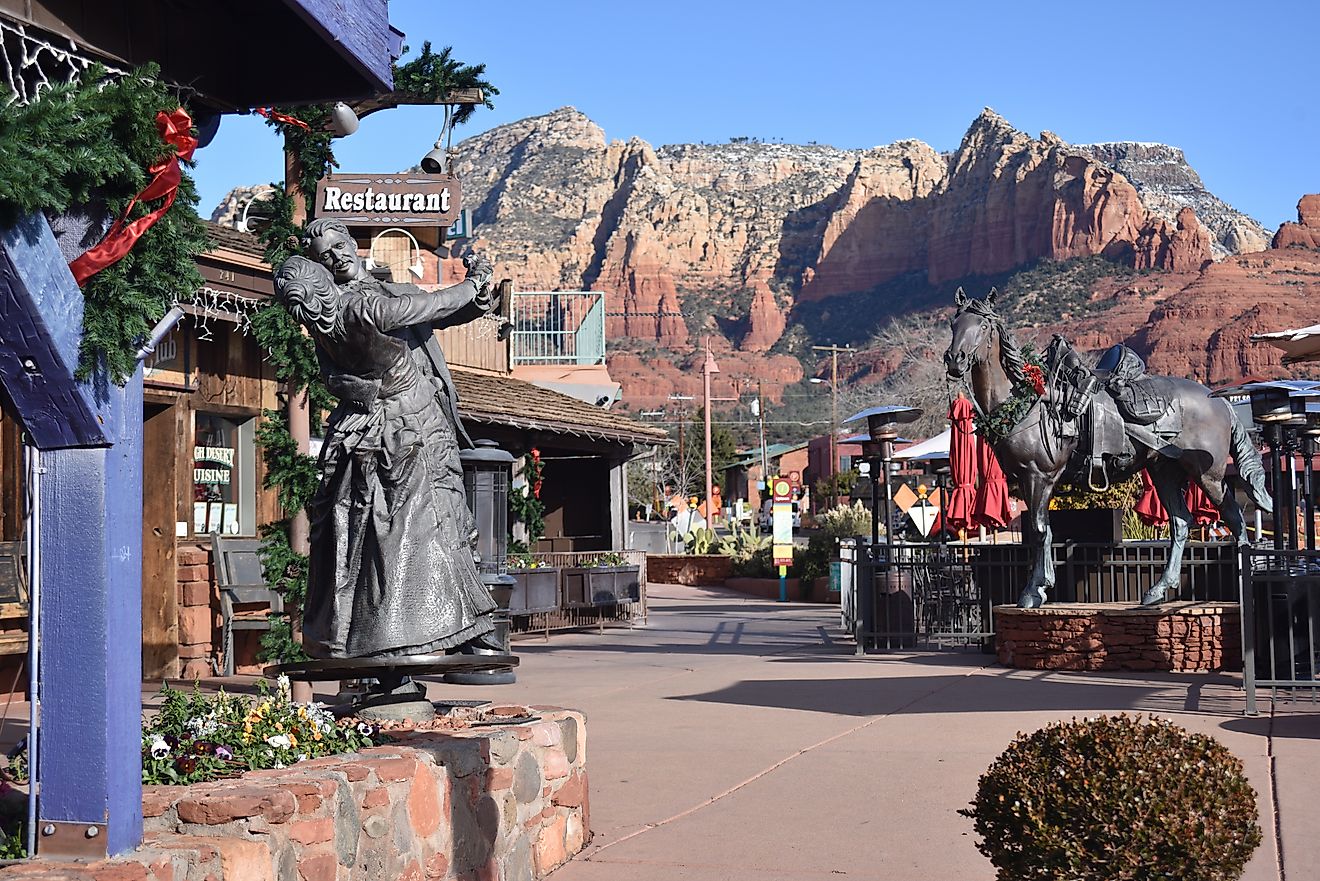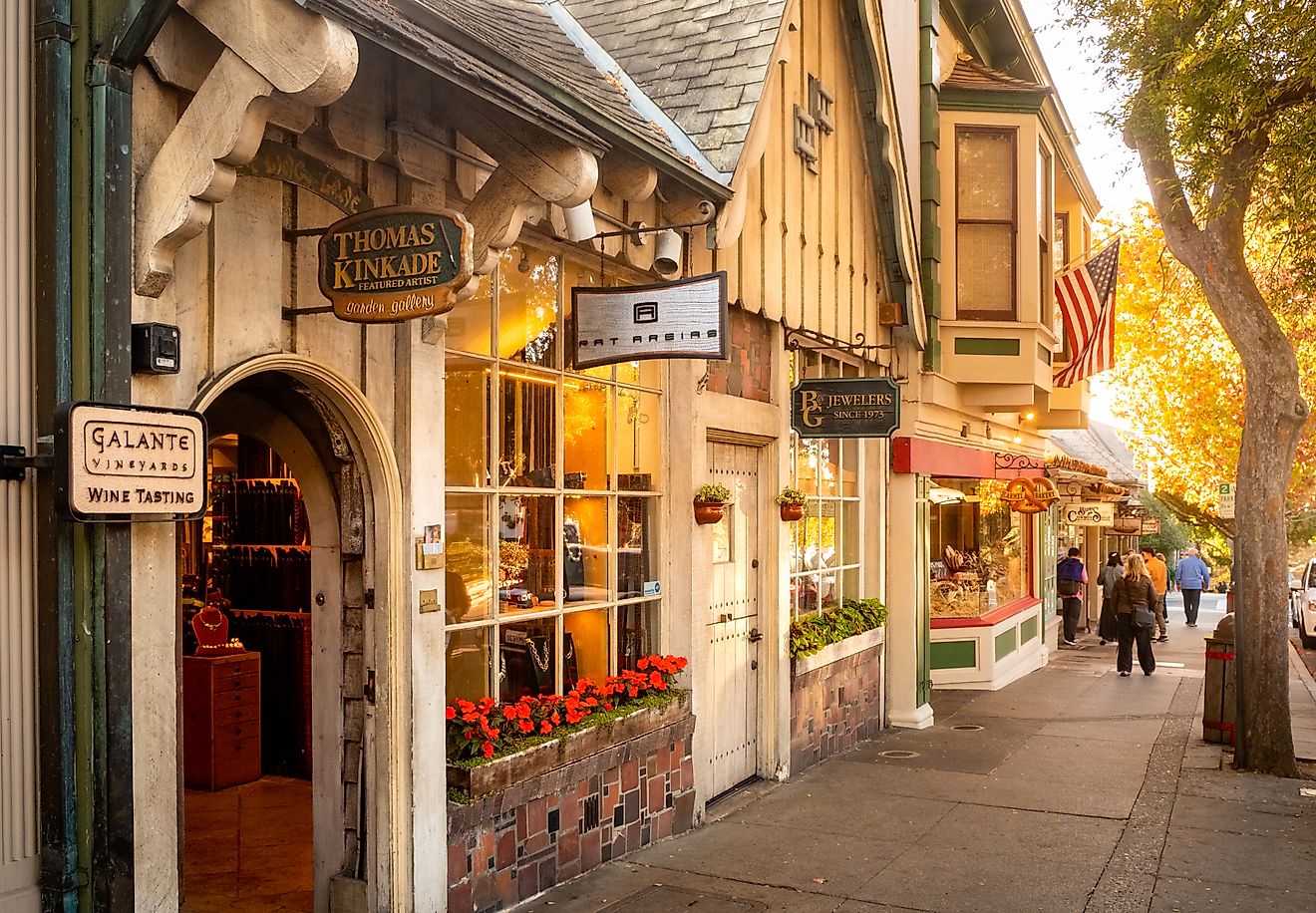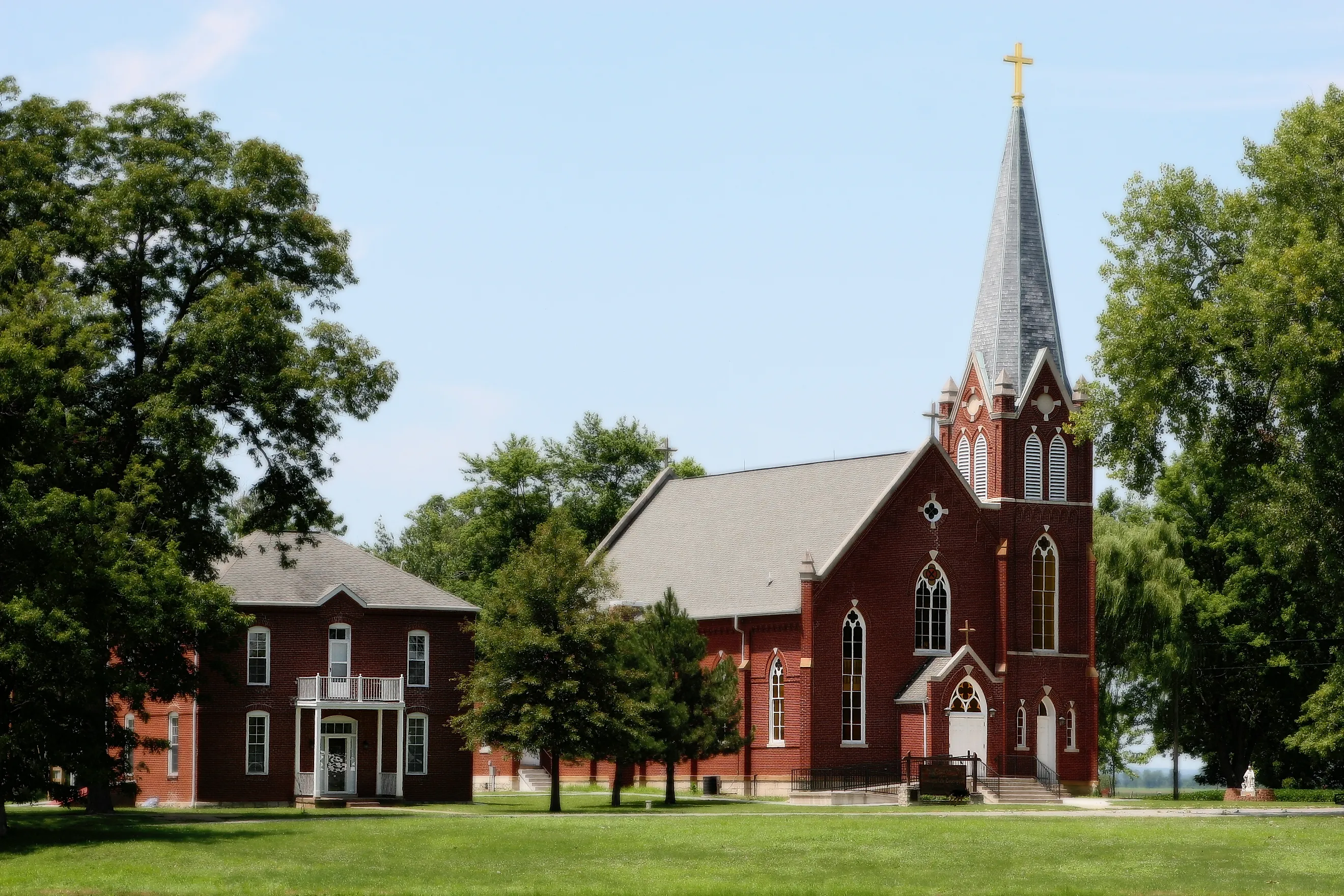
This Illinois Town Is Older Than the State Itself
Barely a noticeable settlement, comprised of just a handful of streets and housing under 30 permanent residents as of the 2020 census, Kaskaskia is, in fact, Illinois' oldest town. Located near the far southwestern corner of the state, this community that once acted as the region's leading center of economic, political, and cultural activity is now a little-known stop for those interested in early American history. Join us today as we shed more light on this quaint town along the banks of the Mississippi River, and what you should see and do while there.
Once a Thriving Capital City, Now an Obscure Historic Settlement
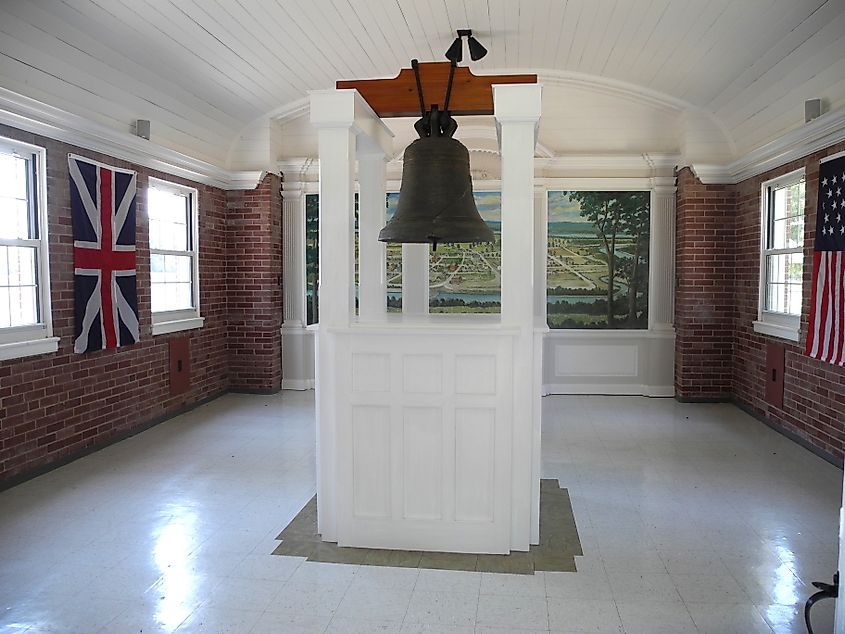
Kaskaskia holds the unique distinction of being the state’s first capital and one of the few American towns west of the Mississippi River that is still part of an eastern state. But the story of this intriguing community begins long before Illinois achieved statehood in 1818.
Kaskaskia was originally a key French colonial settlement. Founded in 1703 by Jesuit missionaries and traders, it subsequently became a center of commerce and religion in what was then called the "Illinois Country," part of New France. By the mid-18th century, Kaskaskia had grown into a thriving hub with a population rivaling even some towns on the highly prosperous East Coast.
During the American Revolution, officer and surveyor George Rogers Clark captured Kaskaskia (which had changed hands over to the British Empire in 1763 after the French Indian War) for the newly forming United States in 1778, establishing official and long-lasting U.S. control over the Illinois territory. When Illinois eventually became a state, Kaskaskia was, of course, named its first capital. However, regular flooding from the Mississippi River, especially the catastrophic flood of 1881, which decimated the town's original foundations, made it an unfeasible place for such political importance.
Today, only a small fraction of the population remains on what is now a river island cut off from the rest of mainland Illinois. Despite its isolation, Kaskaskia’s legacy remains significant for those who know its storied past, and it has become quite the hotbed for history buffs in the Midwest.
Remaining Landmarks
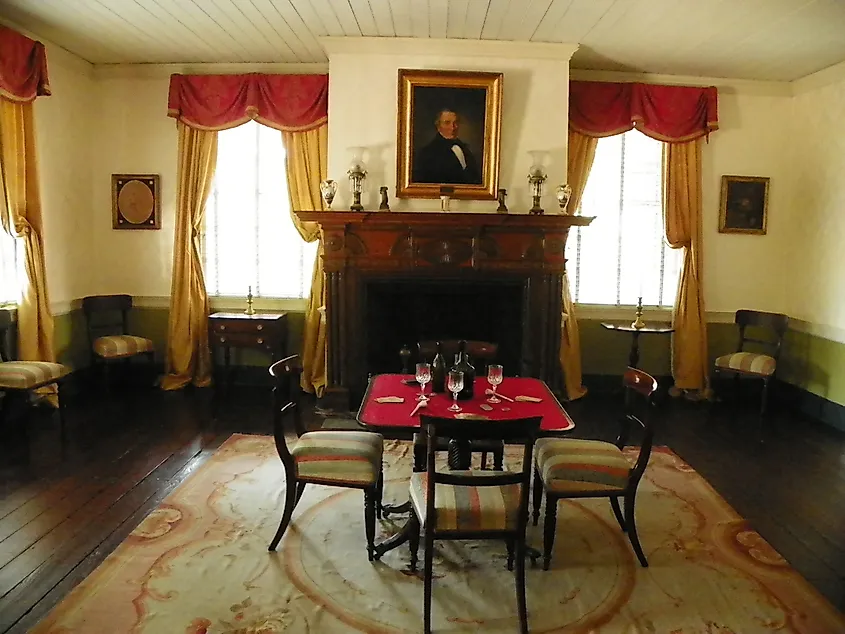
Although the flood of the early 1880s destroyed much of Kaskakia's original structures, several historic landmarks remain today if you seek to uncover the past. At the same time, in the area, stop at these recommended locations for a close-up look at what once was a prosperous and thriving community deep in the heart of America.
The Kaskaskia Bell State Memorial preserves one of the most significant relics of early Illinois history. The bell, cast in France in 1741 and gifted by King Louis XV, originally hung in the village’s Catholic church. On July 4, 1778, it rang to celebrate the town’s capture during the Revolution, earning it the name “Liberty Bell of the West.” The memorial building attached to it, constructed in 1948, houses the cracked but still imposing bronze bell, now silent due to water damage over the years. Here, you will also find interpretive panels and various murals to teach you about one of the only notable landmarks in modern downtown Kaskaskia.
The Fort Kaskaskia State Historic Site marks the location of a crucial frontier defensive structure in the late 18th century. Initially built by the French to defend nearby settlements, American forces later repaired and expanded the fort after they captured it. Though only earthworks, stone foundations, and a commanding bluff remain, the site still offers amazing views over the Mississippi River for all who come. Here, you can explore interpretive trails, signage explaining fort construction and military life, and even a reconstructed powder magazine. It is also simply a peaceful setting with picnic areas and accessible walking paths that will help you appreciate the natural beauty of this region.
Perched just across the Mississippi River, the Pierre Menard Home State Historic Site preserved this elegant manor in 1815 by Illinois’ first lieutenant governor. This brick and timber house blends French colonialism with a more American Federal style, reflecting Montreal-born Menard’s status as a fur trader, landowner, and later early American political figure. Inside, period furnishings, family portraits, and original woodwork provided a detailed window into life on the Illinois frontier. Guided tours further highlight Pierre Menard’s role in shaping early state politics and commerce, making it a compelling stop for historians, both professional and amateur. Moreover, the surrounding grounds have orchard trees and interpretive signs, offering a scenic riverside setting to spend an afternoon.
Other Attractions Around Kaskaskia
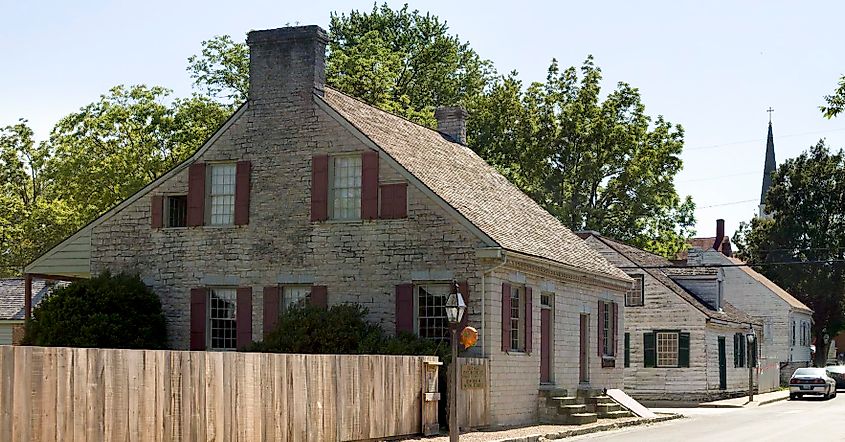
There is more to see here than old-timey remnants in this part of the state. Tour around a little more and enjoy this southern corner of Illinois' other offerings, including parks, roadside stops, and other cool towns spread throughout.
The town of Ste. Genevieve, Missouri, lies just north of Kaskaskia and stands as the oldest permanent European settlement in its respective state. Also established by French colonists in the early 18th century, the town now does a good job of preserving its colonial identity through several still-standing historic homes. This includes the Louis Bolduc House (and adjacent The Centre for French Colonial Life) and the Felix Vallé House, both of which are open to the public. This larger community, with around 5,000 residents, also features several museums with exhibits covering early settlement, geology, and Native American history. If this interests you, stop by the Ste. Genevieve Museum Learning Center, Ste. Geneviève National Historical Park, the Ste. Genevieve Welcome Center, and/or the Beauvais-Amoureux House. There are also several lovely parks in and around town, namely the Ste. Genevieve Levee Wildlife Refuge, which sits right beside the Mississippi River, and Pere Marquette Park, which is tucked slightly more inland.
On the flip side, a short drive southeast will land you in Chester, Illinois. Founded in 1829 as Smith’s Landing, it grew quickly as a river port, shuttling supplies like castor oil, flour, and livestock up and down the lengthy Mississippi. Its strategic spot later drew steamboats and a few notable visitors. Most notably, Charles Dickens stayed here in 1842, with Mark Twain also often stopping at the ports while piloting riverboats in his earlier years. Today, Chester is home to over 6,700 inhabitants and is best known as the hometown of “Popeye” creator E.C. Segar. Bronze and granite statues of Popeye and friends form a fun trail of characters that winds through town, anchored by a bronze Popeye in Segar Memorial Park. On the other hand, enduring local historic architecture, like the 1854 Mary's River Covered Bridge, the Victorian-era Cohen Home with its distinctive blue windows, and various Gothic homes dotted throughout, make this town yet another top spot in the area for history buffs. Visually, the Chester Bridge perhaps stands out the most and connects Illinois and Missouri, offering scenic river views along the way.
Kaskaskia and its surroundings form a pocket of the Midwest where the early history of the United States can be explored in relative solitude. From the Liberty Bell of the West to the preserved French colonial streets of Ste. Genevieve and the river legends still echoed in Chester; this region is definitely worth a visit for curious travellers looking to stray off the beaten path.









